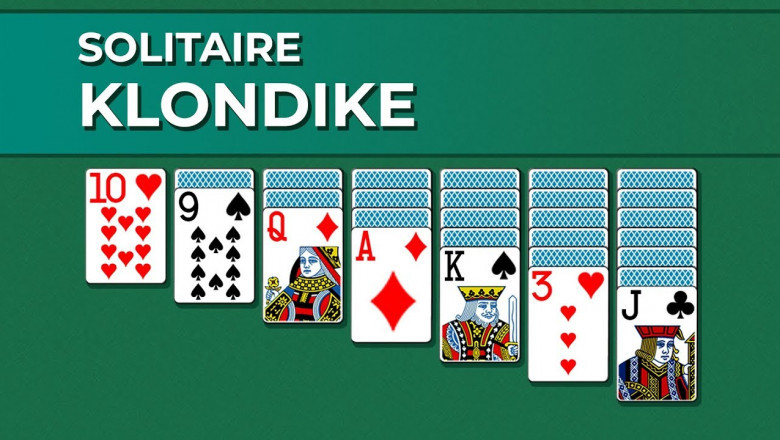506
views
views

Klondike solitaire is a game of perseverance (solitaire card game). In the United States and Canada, Klondike is known as solitaire, and it is one of the most well-known of the family of patience games.
Klondike solitaire is a game of perseverance (solitaire card game). In the United States and Canada, Klondike is known as solitaire, and it is one of the most well-known of the family of patience games.
Game Rules
Seven piles of cards are laid from left to right after shuffling a standard 52-card deck (without Jokers). Each pile starts with one card that has been turned over. Each pile has one more card than the one before it, from left to right. The first and left-most pile contains a single upturned card, the second pile contains two cards (one downturned and one upturned), the third pile contains three cards (two downturned and one upturned), and so on until the seventh pile contains seven cards (six downturned, one upturned). At the start of each klondike solitaire game, the piles should resemble the figure to the right.
The four foundations (light rectangles in the upper right of the figure) are built up by suit from Ace (low in this game) to King, and the tableau piles can be built down by alternate colors, as can partial or complete piles if they are built down by alternate colors as well. Any empty piles or piles of cards can be filled with a King. The goal of the game is to build a stack of cards of the same suit beginning with two and ending with King. Once this is done, the goal is to move it to a foundation where the player previously placed the Ace of that suit. Once the player has completed this, they will have "finished" that suit, with the ultimate goal being to complete all suits, at which point the player will have won. There are several ways to deal the rest of the deck:
Turning only one card at a time, but there is no limit to the number of passes through the deck.
Turning three cards at once to the waste with no limit on passes through the deck, but allowing the player to switch once to a single pass through the deck one card at a time; however, after that single pass, the player cannot return to turning three cards at a time and can turn no more cards from the waste.
Winning strategies
1. When Filling Spaces, Consider Color
Choosing whether to fill a spot with a red or black King is a big decision that should be carefully considered. It's worth noting that the color of the King determines the color order of that pile until you finish the game.
Analyze your cards carefully first to ensure that you don't get stuck when stacking piles. You should also keep things in the proper order. To do this, you simply need to master the fundamentals of the moves available to you.
For example, foundation piles are constructed from Aces to Kings according to suit, whereas sequences are constructed from Kings to Aces, and players must alternate cards of different colors. Don't just randomly place cards of any color. Consider your options and plan your moves carefully.
2. Deal with your face-down cards first.
Face Down cards are usually the most difficult to handle and have the least amount of mobility. As a result, if you have the option of freeing them, don't pass it up. And if you can play this card from the stockpile, it's always a good idea to do so on the tableau. Players should seek out the longest face down piles in particular.
When it comes to dealing cards, we recommend that you only play Kings if you expect real benefits. Keep in mind that only Kings can occupy a free space cell. As a result, don't just move them if you don't see any benefit to doing so. Make certain that your foundation is being built in a clever manner.
While it is difficult to construct foundation piles in the early stages, this isn't entirely a bad thing. You can leave some cards in the stockpile to help with movement later if you get stuck.
3. Experiment with creating stacks of similar suits.
This is a crucial tip, especially for the final game. This will help you work your way up to freeing a stuck card from the face-down cards. However, keep in mind that in some cases, this may be impossible. However, if you run out of options, it is a good idea to keep this option in mind. Let's take a look at an example.
When you have a 7S card blocking various face down cards and you don’t have 5H/4S, you can decide to release piles of 7C-6D-5C-4D and 6C-5D-4S if you have them, then place the 7S to where the 7C was previously to free the face down card.
This method creates smooth stacks and is primarily useful for chains of 4-5-6-7-8 cards. It should be noted, however, that you cannot move cards in the foundation. As a result, before you place a card at this point, keep in mind that you can't reverse it.












